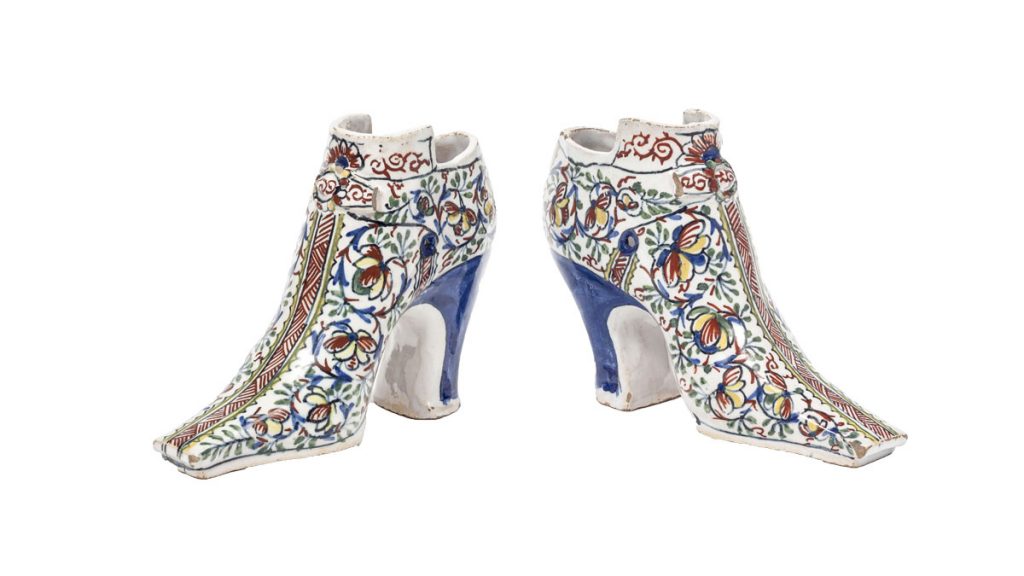Tin-glazed earthenware was introduced to England in the late sixteenth century by Flemish potters who settled in the region of Norfolk to escape religious persecution, however, potteries specializing in tin-glazed earthenware (known as delftware) flourished in the London area from about 1610. They served a wide segment of seventeenth-century society, with the highest demand coming from the gentry, rich tradesmen, and members of flourishing guilds. Increased market demand stimulated the emergence of potteries in Brislington near Bristol, and throughout the British Isles.
The collection illustrates a broad range of functional and decorative objects, embellished with popular heraldic and royal motifs, and showing the new fashion for chinoiseries and the impact of Chinese blue-and-white porcelain.
Until England started producing porcelain domestically from 1745 onwards, delftware potteries supplied better-quality ceramic tableware to a middle-class clientele who could not afford Chinese porcelain, nor the continental imports from France and Germany. The production of delftware started to decline in the 1770s when creamware, a new and technically superior earthenware body was introduced to the market.
The Gardiner Museum’s collection of English delftware was largely donated by George and Helen Gardiner and was expanded with a significant gift from Joan Clark from the collection of Thomas Henry Clark.
1. Pair of Shoes (detail), England, possibly London, 1705-1715, Gift of George and Helen Gardiner, G83.1.549.1-2. Photographer: Toni Hafkenscheid
2. Pair of Shoes (detail), England, possibly London, 1705-1715, Gift of George and Helen Gardiner, G83.1.549.1-2. Photographer: Toni Hafkenscheid
3. Hound’s Head Stirrup Cup (detail), England, c. 1770s. Gift of Jean and Kenneth Laundy, G08.2.45
4. Charger (detail), France, Rouen, attributed to the Poterat manufactory, late 17th century, The Pierre Karch and Mariel O'Neill-Karch Collection, G15.8.1
5. Dish with Scenes of the Abduction of Europa (detail), Italy, Faenza, Attributed to the Master of the Bergantini Bowl, c.1537, Gift of George and Helen Gardiner, G83.1.351
6. Bird Dish (detail), England, possibly Staffordshire, possibly by Thomas Toft (d.1689), c.1690-1710, Gift of George and Helen Gardiner, G87.1.3
7. Sculpture of a Stove (detail), Switzerland, Winterthur, c.1650, The Hans Syz Collection, G96.5.418

